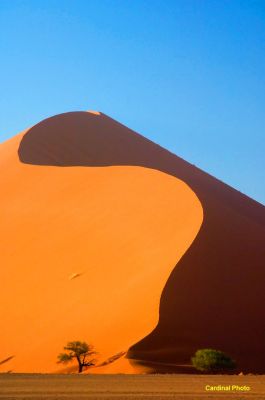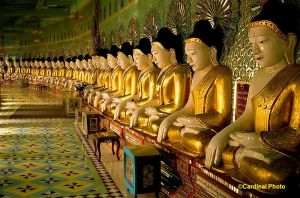- Photo Safaris
- Alaska Bears & Puffins World's best Alaskan Coastal Brown Bear photo experience. Small group size, idyllic location, deluxe lodging, and Puffins!
- Participant Guestbook & Testimonials Candid Feedback from our participants over the years from our photo safaris, tours and workshops. We don't think there is any better way to evaluate a possible trip or workshop than to find out what others thought.
- Custom Photo Tours, Safaris and Personal Instruction Over the years we've found that many of our clients & friends want to participate in one of our trips but the dates we've scheduled just don't work for them or they'd like a customized trip for their family or friends.
- Myanmar (Burma) Photo Tour Myanmar (Burma) Photo Tour December 2017 -- with Angkor Wat option
- Reviews Go hands-on
- Camera Reviews Hands-on with our favorite cameras
- Lens reviews Lenses tested
- Photo Accessories Reviews Reviews of useful Photo and Camera Accessories of interest to our readers
- Useful Tools & Gadgets Handy tools and gadgets we've found useful or essential in our work and want to share with you.
- What's In My Camera Bag The gear David Cardinal shoots with in the field and recommends, including bags and tools, and why
- Articles About photography
- Getting Started Some photography basics
- Travel photography lesson 1: Learning your camera Top skills you should learn before heading off on a trip
- Choosing a Colorspace Picking the right colorspace is essential for a proper workflow. We walk you through your options.
- Understanding Dynamic Range Understanding Dynamic Range
- Landscape Photography Tips from Yosemite Landscape Photography, It's All About Contrast
- Introduction to Shooting Raw Introduction to Raw Files and Raw Conversion by Dave Ryan
- Using Curves by Mike Russell Using Curves
- Copyright Registration Made Easy Copyright Registration Made Easy
- Guide to Image Resizing A Photographers' Guide to Image Resizing
- CCD Cleaning by Moose Peterson CCD Cleaning by Moose Peterson
- Profiling Your Printer Profiling Your Printer
- White Balance by Moose Peterson White Balance -- Are You RGB Savvy by Moose Peterson
- Photo Tips and Techniques Quick tips and pro tricks and techniques to rapidly improve your photography
- News Photo industry and related news and reviews from around the Internet, including from dpreview and CNET
- Getting Started Some photography basics
- Resources On the web
- My Camera Bag--What I Shoot With and Why The photo gear, travel equipment, clothing, bags and accessories that I shoot with and use and why.
- Datacolor Experts Blog Color gurus, including our own David Cardinal
- Amazon Affiliate Purchases made through this link help support our site and cost you absolutely nothing. Give it a try!
- Forums User to user
- Think Tank Photo Bags Intelligently designed photo bags that I love & rely on!
- Rent Lenses & Cameras Borrowlenses does a great job of providing timely services at a great price.
- Travel Insurance With the high cost of trips and possibility of medical issues abroad trip insurance is a must for peace of mind for overseas trips in particular.
- Moose Peterson's Site There isn't much that Moose doesn't know about nature and wildlife photography. You can't learn from anyone better.
- Journeys Unforgettable Africa Journeys Unforgettable -- Awesome African safari organizers. Let them know we sent you!
- Agoda International discounted hotel booking through Agoda
- Cardinal Photo Products on Zazzle A fun selection of great gift products made from a few of our favorite images.
- David Tobie's Gallery Innovative & creative art from the guy who knows more about color than nearly anyone else
- Galleries Our favorite images
DPS 4-17: Advice on buying your next PC & Will your next camera see in the Dark?
DigitalPro
Shooter
DPS 4-17: Advice on buying a New PC in 2007 & Will your next camera see in the dark?
It's been a long time since so many pieces of new technology were being rolled out at the same time in the PC space. Windows Vista, Adobe Photoshop CS3, Office 2007 and dual core processors are all hitting the market at about the same time. That makes it a great opportunity to consider buying a new computer--especially since the new software coming out requires ever more processor power and the new cameras' larger sensors require more horsepower and disk space as well.
But when you should buy, what you should buy, and how you should migrate to the new machine varies greatly depending on your requirements, budget and comfort with technology. We can't cover all the possibilities in this issue, but we'll take you through the highlights of the new technologies and suggest some strategies for migration depending on your situation.
Event Note: If you're looking for a great value in a photo safari, the weak currencies in Southeast Asia make our Cambodia, Burma (Myanmar) & Thailand trip a real bargain. At less than $5K per person for a nearly two week trip with first class accomodations & private guides throughout it's hard to beat. Give yourself the holiday gift of a January get away! We've also still got an opening for our Texas bird photo safari in April, several openings for Botswana in May and for the second bear safari in July.
 Sand dune, Namib Desert, Namibia |
Possible Fall 2007 Namibia Trip: We've also gotten a number of requests to lead another trip to Namibia. Namibia features truly unique scenery (especially the famous red sand dunes and skeleton coast) as well as exotic desert wildlife in addition to some great traditional wildlife photography. But it is not frequently visited by photo groups, so we only organize these trips when there is sufficient interest. So you'd like to come with us this fall, let us know at safaris@cardinalphoto.com. -- David |
Vista
For PC users the biggest software event of the year will be the official launch of Windows Vista. The best time to "upgrade" a PC to a new OS is before you ever use it with the old one. If you're one of the lucky few who has access to Vista through their corporation or school already, then now is a good time to purchase a new machine and put a clean install of Vista on it before you do anything else. Otherwise you'll have to wait until Vista is bundled on the machine, but either way if you're going to buy a machine this year and you think you'll ever want to upgrade it to Vista, you'll have the best success if you do it when you first get the machine. If you wait until you've filled it with software life gets much more complex.
The most obvious advantage of waiting is better software support for Vista. Vista ships with nearly 20,000 device drivers, but at least another 10,000 are expeced to be available on the Windows Update site by the time the product officially launches on January 30th. Many vendors such as Symantec have no products released on Vista yet, so if you want to make sure you're full complement of applications is available, you'll want to sit this one out for a month or two at least. Capture NX, for example, from Nikon has problems and will need an update.
To reiterate though: If you are going to move to Vista any time soon, it is much easier to do start using Vista with a new machine than to buy a new machine, get it all set up and your applications installed under XP and then update it.
Photoshop CS3
Adobe has made CS3 Beta available for "free" download to registered users of CS2 (see the article and link on our homepage: http://www.nikondigital.org). What a huge boon for those getting a new machine. Normally one of the big hassles is the Adobe Activation system. But with the CS3 beta it is a no-brainer to install the beta on your snappy new machine. Then by the time CS3 finally ships (in April or May, most likely) you can decommission the CS2 on your old machine and license CS3 on the new machine. But in the meantime you can use Photoshop on both machines and not have to worry about compatibility issues between the two.
Office 2007
Office 2007 is also brand new, and does a better job of integrating with the Vista interface than previous versions. You can download the 60-day trial to get you started until you can buy it later this month. As with Vista, the best time to move to the new version of Office is when you purchase a new machine. It's less work that way. The good news is that Microsoft's Vista migration wizard does an excellent job of moving Office settings from your old machine to your new one.
Migration Tools
Microsoft has enhanced their file & settings transfer wizard to the more snappily named "Windows Easy Tranfer" tool. It did a great job of tranferring my Office and Internet Explorer data and settings but did a horrible job on transferring data files and has a dreadful interface (there is no way to save your settings, so if you need to cancel the transfer due to some type of hang--of which there are several possible--you have to respecify everything again). The Microsoft tool does not tranfer applications, which is a problem because one of the problems with Vista has been that the official "upgrade" option for installation never seems to work, so all installs need to be "clean" installs--which means a need to either transfer or re-install your applications. This week Laplink announced the first migration tool that allows you to move applications as well as data from your existing machine to your new Vista machine--PC Mover for Vista.
I tried an early release version of PC Mover for Vista and it did work but with two major caveats that I found very limiting:
* PC Mover does not allow you to select which applications to transfer. For me this was a huge problem, as I did not want to move PS CS2 (as I already had CS3 on the new machine) or Norton (as it doesn't even work on Vista, and once it was transferred I couldn't even run the installer to uninstall it)
* Because you can't select which applications to move you also get all the vendor specific utilities from your old computer.
To me a new computer is a great chance to leave behind all the old and broken applications that you don't want any more (and which often can't be uninstalled properly because their install source is mangled or missing). So unless you have a machine already set up about the way you want PC Mover will be of limited use until they add application selectivity (they have let me know it is likely to be April or May before they have this feature).
Microsoft has purchased the makers of AlohaBob, so look for them to announce application migration sometime around the official launch of Vista at the end of January.
 |
Namibia is home to many unique species like this Desert adapted Elephant. Desert Elephants have extra long legs which helps them cover the very long distance between water sources in the Namibian deserts. Their large feet also help them move effectively across the sand and rocky terrain. |
After-Christmas Sales
Yes, as usual there are some great after Christmas values in computers both at your local retailer and at online outlets like newegg.com. I just purchased an ASUS Core2 Duo laptop loaded for $1300 (see below), which is 2/3 of what it was selling for only a few weeks ago. Almost all of the current models should now be bundled with a Vista Upgrade Coupon. HOWEVER, the actual process of getting the upgrade can be byzantine depending on the vendor, so if you don't have access to Vista through another source you may want to consider waiting until your vendor of choice pre-installs Vista on their machines.
Laptop Price Crash
I thought it was a typo when I saw newegg.com advertising an ASUS A8Jp Core2 Duo laptop for $1298. But that was their price. Since then I've found what might be a better deal with Amazon advertising the A8Js (with a different graphics card) for $1633. The "S" model not only has a better graphics card, but comes with a single 1GB memory stick, making it easier to add a second one (the P comes with 2* 512, which means that to upgrade you need to trash your existing memory). These are serious laptops for the roadwarrior, with 1400 x 900 14" Brite displays, 2GHz Core2 Duo chips, 1GB of RAM, a dual-layer burner, DVI (which I've really wanted for awhile), 120GB SATA drive, USB, Firewire, wireless & Bluetooth. They are quick, well built and well liked. The "s" configuration comes with a 1GB stick of memory, which is nice because you can add a second stick without trashing one of the existing ones. There is almost nothing not to like about these machines except battery life--which is pretty mediocre, at maybe 2 hours--but that is true for most Core 2 Duo laptops so you need to decide if you want the beefy performance at the expense of battery life or not.
| Dell also has some great prices on both laptops and desktops. In particular, if you don't need the extra horsepower of a Core2, they have a great deal on a Core Duo $899 Dell™ Home Notebook! |
NAS: Infrant ReadyNAS+
NAS (Network Attached Storage) has been an elusive option for photographers. NAS promises large amounts of online storage for your network without the complexity of adding a server PC. Until a couple years ago NAS solutions were too expensive for small business and personal use. But consumer vendors like Buffalo broke through the price barrier with a Terrabyte solution (Buffalo TerraStation) for less than $1K. Unfortunately the TerraStation is best used as an archive device as it is quite slow. Then Infrant introduced the ReadyNAS+, nearly as fast as an external hard drive (about 80% as fast in my testing) with competitive pricing and extensibility.
What does this have to do with buying a new computer? There is no better time than when you're considering moving or adding a machine to think about your storage architecture. Recently I moved most of my project files to an Infrant box which meant one less disk to upgrade or replace when I upgraded my server. Also, now the files are available all the time on a low power "no maintenance" box instead of requiring the server be running. That way any of us can work on a project without worrying about which compters are on. And the Infrant can be set to turn off for the hours each day when no one is in the office to save even more power.
So you might consider (while you're waiting for Vista to settle out and that fancy quad-core processor to ship) investing in an Infrant box, moving some of your folders to it, and getting ready for your new computer. The Infrant can be purchased with drives or "bare", allowing you to add your own SATA drives. They can be configured as a flexible and extensible "X-RAID" (fancy version of RAID 5) array, so you can start with 2 or 3 drives and add more later.
Even if you don't want to sacrifice the speed to get at your files (I still keep our main image archives on a dedicated server with a high-speed internal RAID array) you can mirror your image drive(s) onto the Infrant which will help both with your backup strategy and also give you an extra margin of safety when you need to upgrade the machine that has all those files.
(What about) Battery Life on New Laptops
Despite the claims of improved power management in Vista and on new laptops I'm not impressed so far. Not only is the system at least as power hungry as before (usually more so) but the power management control panel applet drives me nuts. The taskbar icon doesn't even have a right click to single-click between power modes. It is a frustrating step back. This should get addressed when the laptop vendors update their enhanced power management utilities to work with Vista, which will at least help with the user interface problem if not the actual power consumption.
What if I wait?
Much as every year for the past 30 (which marked the introduction of the first "2K" personal computers) processors will be getting faster as the year goes on. Intel will be shipping its Quad core Kentsfield and behind that are planned 8-way processors. But they'll be expensive at first so unless you have a large budget don't get your hopes up. So if you don't need a new machine right away as always you can wait until before you need it and almost certainly get more for less. The flip side is if you want to move to Vista and a suite of new applications you may be better off putting them on a new machine designed to run them rather than shoe-horning them into you existing machine and then having to move them all in a few months when you want more performance.
One other intriguing new trend which we've written about before is hybrid drive laptops. These machines will have drives with flash memory coupled with the drive to provide varying amounts of cache. Some will have enough flash menory they can actually boot from it--which would greatly reduce the time and power required for startup. Others will only have enough to help reduce disk access, improving performance and reducing battery consumption while you're using the machine. Vista has support for at least some of these capabilities--for example using its ReadyBoost feature you can use a flash card as a system cache.
What are my options?
Below we outline some of the most common scenarios for purchasing and migrating to a new PC, based on your assessment of your technology savvy (and time available) as well as the type of computer you need:
Cardinal Photo Safaris Update:
|
||||||||||
Early Adopter Looking for a Laptop:
- As soon as you can get Vista or get a laptop shipped with it, go ahead and buy a new Core2 Duo laptop. Currently I think the ASUS A8J series pricing is unbeatable, but new machines and prices are announced daily. Look for SATA as a drive interface technology on the newer machines as well.
- You'll want at least 1GB, 2GB if you can afford it. Sometimes it is cheaper to buy a machine with less memory and upgrade it yourself, but if (for example) you get a machine with 2*512MB sticks of memory and you want to upgrade with a 1GB stick you'll be "wasting" one of your original sticks.
- Make sure the machine has enough USB ports (for PCs, Macs are better with Firewire) to do what you need.
- Some of the newest PC laptops have DVI (finally--Mac has had it for years) which is great for driving digital projectors and newer LCDs. That was one of the big plusses for my new ASUS.
- Dual layer DVD burners are also getting quite affordable so you should be able to get one if you want one for backing up your images.
- For me, WiFi and Bluetooth (mostly for my mouse) have become a necessity. If you want them it is much more convenient to have them built in.
- If you want to run the fancy new "Aero" interface in Vista, make sure your laptop has a separate graphics card with support for Vista and Aero. Integrated graphics chips typically do not. Of course these power-hungry add-on graphics cards will improve your performance only at the expense of battery life.
- Screens are either "glossy" (Often called X-Brite, TruBrite, or something similar) or "matte" (many of the Thinkpads are matte). Glossy screens make images really pop but suffer from glare. Matte screens do better in bright light but your images won't look as good as those of the person sitting next to you looking at them on a glossy screen--although profiling will help.
- If your laptop doesn't have Vista on it upgrade it when you get it
(most laptops come with Restore CDs, so you can safely experiment with Vista and be able to go back. If you don't get restore CDs with the machine there is usually a way to create them first thing) - If you want to move to Office 2007, download and install it
- If you think you'll want CS3 and you have CS2, download the trial and install it.
- Run the Microsoft Easy Transfer Tool to move over all of your web and Office settings
- Install any of your applications that you really want going forward
Early Adopter Looking for a Desktop:
Very similar to a new laptop, except:
- For Photoshop, dual displays are a huge help. Make sure your video card supports them. Ideally at least one of the outputs should be DVI. If you can afford 2 DVI monitors and a dual-DVI card, that is a top of the line setup. Some of the high-end cards even support more than 8-bit depth graphics, but unless you have money to burn those are more than you need. Not all dual-head cards are alike. Make sure and get one that supports different resolutions on your two displays, and different color profiles for each. I've had good luck with cards using various ATI Radeon chipsets.
- Dual or quad core machines are the order of the day. AMD based machines are getting great reviews for price/performance, but Intel has come roaring back with their Core2 family of processors so the vendors are more or less nose to nose at this point. Personally I've wound up standardizing on Intel CPUs just to keep things simpler.
- If you're into the details sites like pcmag.com and extremetech.com can give you the low down on the effect (if any) of various bus speeds, memory speeds and configurations and other system options. But in general if you stick with a name brand like Dell or Gateway they'll balance those tradeoffs based on the price point for you.
- Think about expansion. You'll need more and more storage (of course). If you want to keep your storage inside the box, make sure and get plenty of power and drive bays. If not, then make sure you have plenty of expansion ports for the drives you'll want to add on. SATA is the emerging standard for desktop drives, replacing IDE, so look at using that for new drives.
- If you are going to keep images stored on your computer, consider a RAID array with a nice high performance controller like one from Promise. The on board RAID controllers are okay for mirroring, but are not very flexible or high performance. If you want to get fancy consider at least one 10K RPM drive for Photoshop scratch space or your system drive (they tend to be too small and expensive to store all your images unless you have a huge budget).
Main stream user looking for a laptop or desktop:
If you need it now, go ahead and get it with XP and assume it'll be at least a year before you worry about Vista or even Office 2007 and don't worry about it. Use PC Mover or equivalent software to move your existing applications across when you buy it. As far as your hardware choices, they follow along the same lines as those for the early adopter since processing your images will be the toughest task your computer will face in either case.
(not) Quite Yet for the faint of heart
As you can see from above we are in a major product transition. In my case Windows Vista, Adobe Photoshop and Microsoft Office are almost the entire extent of the serious "Desktop" applications I use on my laptop on the road (along with Dreamweaver and MapPoint). Most of the rest of my critical software is either an add-in to one of them or is "Web 2.0 - ware" which lives mostly on the web and only has a small presence on my laptop. So for all three of them to be transitioning at once is not only a rare occassion, but is a great opportunity to start out with a new machine and a clean slate.
Protecting your new Installation
Norton doesn't have Vista versions of its Anti-Virus or Systemworks products out yet, so I'm using TrueImage from Acronis for disk cloning and backup and Microsoft Live OneCare Beta from Microsoft. So far so good. The only downside I've found to TrueImage is that cloning the system drive requires a reboot (it runs in DOS mode like the old Ghost versions). OneCare seems fine although I suppose with Anti-Virus software you may not know whether it is working until it is too late!
 |
Animals aren't the only ones who've adapted to live in the desert in Namibia. The Himba tribe has lived for many centuries as nomadic cattle herders in a land with very little rain. Many of the adults only know how old they are by how many rains they have experienced. For those who come to Namibia with us we'll have a great opportunity to visit with the Himba in one of their traditional villages and learn how they've come to terms with one of the world's harshest enviornments. |
Feedback
Let us know what you decide or feel free to ask additional questions in our Photo forums, where we've had a number of active discussions on digital workflow choices depending on the needs of the individual photographer. Or post some of your favorite images along with their stories so we can all learn from your experiences.
News: A Camera that sees in the dark?
Planet82, a maker of imaging sensors, introduced a new hybrid sensor at CES that can see in the near dark. In an impressive demonstration Planet82 showed the sensor able to take still, motion and color images in a nearly dark room. The first chips are only VGA resolution, but 2 mega-pixel chips are to follow shortly, followed by higher resolution over time. Read the PC Magazine coverage.
 |
Professional Photoshop 5 by Dan Margulis is finally available, discounted to $38 at Amazon. Whether or not you've read previous versions of Dan's signature work the new edition has a huge amount of new and updated material and is worth buying.
|
If you have a hot tip or news item for DigitalPro Shooter,
write us at dps@proshooters.com. If
your tip or news item is picked as the Shooters' Tip of the Week, we'll send you
a really cool DigitalPro hat! Or just write us to let us know what you think of
the newsletter.
To keep up with the latest articles and reviews, join
me at http://www.nikondigital.org.
For the latest versions of DigitalPro, visit
http://www.proshooters.com/dp.
Good shooting!
--David Cardinal, editor DigitalPro Shooter
nikondigital.org / Pro Shooters LLC
To Unsubscribe, please click here.
- Log in to post comments





